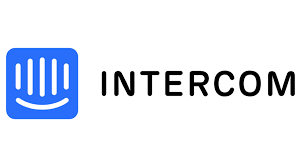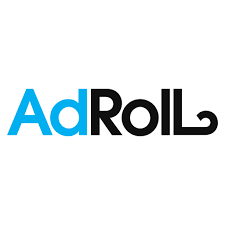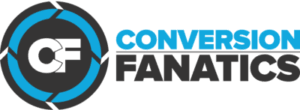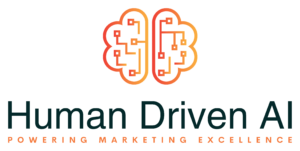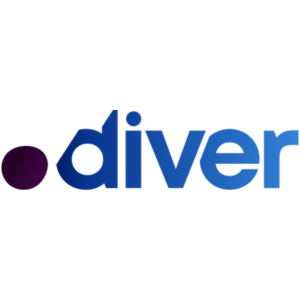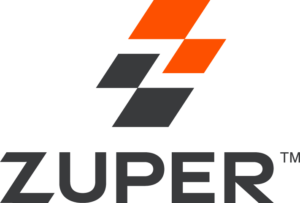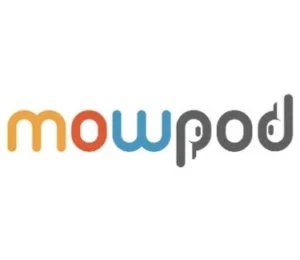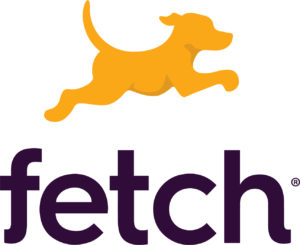LISTEN IN A POD APP
Filters
Adetutu Laditan | YouTube
Collaborating with creators for YouTube Growth — Adetutu Laditan // YouTube
Adetutu Laditan, Senior Product Marketing Manager for Sub-Saharan Africa at YouTube, explores YouTube monetization and growth. In marketing today, trust holds immense value, and creators have become beacons of trust, influencing consumer brand perceptions. Collaborating with creators on YouTube offers brands a way to authentically connect with audiences, scale messaging, and drive conversions.Today, Adetutu discusses…
Play PodcastAdetutu Laditan | YouTube
Roadmap to monetizing YouTube content — Adetutu Laditan // YouTube
Adetutu Laditan, Senior Product Marketing Manager for Sub-Saharan Africa at YouTube, explores YouTube monetization and growth. YouTube, the world's second largest search engine, holds vast potential for marketers. But, transforming video production into a monetization opportunity on the platform requires a strategic approach. Today, Adetutu discusses the roadmap to monetizing your YouTube content.
Play PodcastStephan Beringer | Mirriad
Virtual Product Placement — Stephan Beringer // Mirriad
Stephan Beringer, CEO of Mirriad, explores how in-content advertising has emerged as a powerful tool for reaching engaged audiences. Virtual product placement is a powerful tool for brands to connect with audiences in a relevant way and cut through advertising clutter by integrating seamlessly into content. It offers a unique opportunity to break through in…
Play PodcastStephan Beringer | Mirriad
In-Content Advertising in Streaming — Stephan Beringer // Mirriad
Stephan Beringer, CEO of Mirriad, explores how in-content advertising has emerged as a powerful tool for reaching engaged audiences. In-content advertising has risen in popularity because it overcomes the drawbacks of traditional interruptive ads, which frequently result in ad fatigue and reduced viewer engagement. It achieves this by seamlessly integrating brands into content and increasing…
Play PodcastSterling Jackson | Aspire
Why brands and creators are investing more into video content — Sterling Jackson // Aspire
Sterling Jackson, Head of Marketing at Aspire, explores what factors influence online brand trust. Video has a unique ability to engage viewers and convey a brand's message in a way that other forms of content simply can't match. Plus, with the ability to repurpose video content across multiple channels, it's a cost-effective investment in any…
Play PodcastMatt Swalley | Omneky
Increasing sales through AI personalization — Matt Swalley // Omneky
Matt Swalley, Co-Founder and Chief Business Officer at Omneky, talks about how to use AI to boost sales. As platforms become more restricted with targeting, creative has become a major lever for distribution. But, with AI personalization, businesses can feed the platforms with a wealth of personalized content for ideal customer profiles, products, and platforms,…
Play PodcastVitaly Pecherskiy | StackAdapt
Contextual targeting’s next level — Vitaly Pecherskiy // StackAdapt
Vitaly Pecherskiy, COO at StackAdapt, talks about why digital marketers should adopt programmatic advertising now. While third-party and user-level data have been the go-to for delivering results for marketers, contextual advertising is now emerging as a powerful alternative. By providing precision that is often difficult to achieve through third-party data, contextual advertising offers a valuable…
Play PodcastVitaly Pecherskiy | StackAdapt
Why programmatic is growing? — Vitaly Pecherskiy // StackAdapt
Vitaly Pecherskiy, COO at StackAdapt, talks about why digital marketers should adopt programmatic advertising now. In today’s advertising landscape, programmatic advertising is the standard way in which media is bought and sold. However, programmatic technology is unable to automatically solve the problems of customer acquisition and still requires an understanding of your ideal customer profile…
Play PodcastErin Schmidt | BENlabs
Technology-driven product placement — Erin Schmidt // BENlabs
Erin Schmidt, Chief of Product Placement at BENlabs, talks about product placement. While it may seem like a subtle and unobtrusive form of advertising, the impact of product placements should not be underestimated. When done well, product placements can not only increase brand awareness but also improve brand perception and drive sales. Today, Erin discusses…
Play PodcastMichelle Songy | Press Hook
Does PR convert into qualified leads? — Michelle Songy // Press Hook
Michelle Songy, CEO and Founder of Press Hook, talks about how artificial intelligence and big data are affecting the future of public relations. The marketing industry is experiencing a transformation with the emergence of technology-driven channels for creating brand influence and executing public relations. The shift is evident as these channels are no longer solely…
Play PodcastAbout Business Type: Advertising Platform
Advertising
Advertising is all paid forms of communication from sponsored sources designed to draw consumer attention to goods, services, ideas and the sponsor or brand itself. Advertising is largely directed toward groups, namely demographics and personas. Advertising campaigns are delivered via television, print materials, radio and primarily on the internet. These campaigns are designed to reach target audiences and promote various services, products and options.
Advertising in its essential form dates back centuries, and until the last two decades ads were mostly served in newspapers, over radio and on television. The advent of the internet and new technology led to the emergence of online advertising. The majority of ads and advertising campaigns are now served online through mobile devices, social media and desktop devices.
Types of Advertising Campaigns
Ad campaigns accomplish three primary objectives:
- To inform - Informative advertising focuses on increasing brand awareness in customers. It describes a company's products, services or ideas. Informative campaigns are designed to promote new products, programs and educate people about the unique benefits they offer.
- To persuade - Persuasive advertising aims to convince customers that the services or products the company offers are the best in a respective industry. Persuasive ad campaigns target audience perceptions to enhance and entice customers to purchase a product or service. The main goal is to influence customers to switch brands, try new products or reinforce brand loyalty.
- To remind - Reminder advertising campaigns remind people why they need a company's product or service.
The most common ad campaign types are:
- Product-focused advertisements - Advertisements that promote a product's benefits, characteristics and functionality. Product-focused ad campaigns demonstrate why a product is worth purchasing. Sales are the main metric to measure success for this type of marketing campaign.
- Institutional advertisements - Advertisements designed to promote institutions or a specific industry. They inform the public about changes within an institution or reinforce the contributions of certain industries and organizations. Their primary goal is to improve public relations among target audiences and used mostly for crisis management.
- Public service announcements - PSAs are a unique ad campaign type, as they typically focus on social-welfare or non-profit issues such as stopping drunk driving, housing the homeless and practicing healthy lifestyles. Nonprofit organizations typically sponsor PSAs along with government agencies pushing political initiatives.
- Paid search advertisements - Paid search is useful for acquiring new customers in ecommerce and other marketing initiatives. Paid search involves keyword bidding on advertisements related to specific keywords that appear at the top of search engine results pages (SERPS). Advertisers only pay when a customer clicks the advertisement, otherwise known as pay-per-click. Paid ads are easily measurable, targeted and deliver quantifiable results.
- Social media ads - One of the most prevalent channels for modern advertising, social media ads are delivered across social platforms. Social media ads provide fast ROI as they're conducted in real time. Social ads allow greater freedom and more options to deliver various content and media to ideal customers.Social media campaigns encourage creative strategy and are cost-effective. Marketing on social media requires utilizing multiple platforms as target audiences are segmented across channels. Creating content that suits each platform is vital to ad success. For example Instagram is best suited for visually engaging static images, whereas TikTok is best utilized by influencers who create memorable videos.
- Display ads - Display ads are prevalent on most websites as animated or static advertisements placed along the side or the top of web pages. Display content aims to inspire quick conversions, and their reach is extensive as search engines match ads with millions of websites based on targeting and keyword preferences.However, their effectiveness is limited due to oversaturation in the marketplace. Users have grown to ignore them and click-through rates are low. Visually stimulating, eye-catching ads can still target people more efficiently than other methods in some cases.
Traditional Advertising
Traditional advertising, or traditional marketing, encompasses all offline marketing. The most common forms of traditional advertising campaigns are:
- Newspapers/magazines
- Radio
- Direct mail
- Broadcast/television
- Phone
- Outdoor advertising like billboards
Although traditional marketing is still used, fewer people are subscribing to print media and opting for streaming services instead of cable TV and radio. Traditional marketing campaigns disadvantages include:
- Businesses have little to no interaction with consumers they market and sell products to.
- Once an ad is printed or posted, it can't be edited or changed. Marketers must publish a new ad instead, which can prove expensive.
- Advertisers can't measure real-time engagement and results.
- Print ads lack the media capabilities of new technology to capture audiences raised on mobile devices and social platforms.
Despite the rise in digital marketing efforts, traditional advertising is a tested, important form of marketing that still provides benefits.
Online casinos have become increasingly popular as more and more people are turning to the internet to find new and exciting ways to gamble. Slotogate is one of the leading platforms in the industry, offering a wide selection of casinos that players can choose from. Direct mail open rates are on average 30% higher than email marketing, and print media can also provide a higher ROI with unique advantages such as longer shelf lives and greater accessibility across multiple generations. Print ads are easier on the eyes for readers, and are appealing to those who prefer hands-on learning. With all these benefits, it's no wonder that print media is still a popular choice when it comes to choosing an online casino on the Slotogate platform using interac casino deposits
- Direct mail open rates are 30% higher on average compared to email marketing.
- Print media can provide higher ROI in unique ways when they find their way into places like doctor's office waiting rooms, where they experience longer shelf lives.
- Print ads are more accessible across multiple generations, especially to older generations who prefer physically picking up a newspaper or magazine.
- Print media appeals to hands-on learners. Print media is also devoid of distracting pop-ups that often plague most websites, which makes print marketing easier on the eyes for readers.
Digital advertising
Digital advertising is all marketing conducted online. Digital campaigns are vital revenue drivers, composing half of all marketing campaigns, strategies and initiatives. The most common forms of digital, or online, advertising are:
- Pay-per-click or PPC advertising
- Social media ads
- Email marketing
- Blog posts
- Display ads
Despite its usefulness, digital advertising still has disadvantages.
- When technology breaks or software malfunctions, so do digital ads. Advertisers typically have no control in these situations and must wait until ad platforms implement fixes.
- Although social media advertising is highly cost-effective, other marketing methods like paid advertising can prove expensive. Paid search guarantees results, but significantly consumes large portions of advertising budgets.
- Consumer information is more susceptible to hacking and privacy issues. Social media frequently experiences attacks. Although social sites take strict action to make user information private, hacking attacks are still prevalent.
- Technology is evolving at a lightning-fast pace, which requires greater maintenance costs, frequently optimizing multiple media channels and implementing updates.
- Digital marketing is highly oversaturated, making it difficult to compete with competitors in the space.
For all its disadvantages, digital marketing still provides a wealth of benefits.
- Digital marketing campaigns allow for greater personalization to create unique, dynamic content that efficiently targets the right audiences.
- Marketers are able to create ad groups to reach specified target markets.
- Digital campaign performance are easily tracked using analytics software to provide real-time results to yield retargeting opportunities.
- High-quality online content encourages engagement, enriches campaigns and improves brand awareness.
How to Combine Offline Advertising and Online Advertising
Offline advertising is another classification for traditional advertising methods conducted off the internet. Although useful, it's still difficult to target specific demographics compared to automated online advertising. Offline advertising supplements online advertising, where the majority of advertising strategies lie.
Online advertising, commonly referred to as digital marketing, encompasses all digital advertising efforts. It's the most flexible for advertisers, and it allows for greater tracking of data on demographics, buyer personas and more.
When combined, offline and online advertising can create powerful, engaging campaigns. Success ultimately depends on campaign targeting and customizing strategies to drive impact. The best approach to combining both includes:
- Conducting background research.
- Establishing objective-based communication.
- Identifying core campaign goals.
- Establishing monitoring and reporting insights.
Radio Advertising
With the advent of digital marketing, radio ad spend has remained relatively flat. BIA estimates ad revenue from broadcast radio adverts averaged $12.8 billion, which is still a lucrative marketing landscape. The growing popularity in podcasting increased broadcasting ad success.
Radio audiences are vast and contain mixed buyer personas, segments and demographics. Radio marketing, which is also known as push marketing, delivers messages to members of your audience at every stage of the sales funnel. Radio sales campaigns consistently push brand awareness initiatives, which keeps company's on the top of consumer's minds.
Radio advertising is unique when it comes to advertising media. Catchy sales jingles and tunes are extremely valuable media that get stuck in consumer's minds, establishing long-term brand recognition. Radio's strong brand cultivation strategies pair well with any digital marketing strategy. However, radio advertising can prove expensive and the barrier to entry is high.
Radio advertising is most useful for businesses offering "Big ticket," services and products or own multiple locations and sales channels. Radio ad campaigns work best when the consumer listener base has extensive access to a company or brand.
When Not to use Radio Advertising
- When ads only target local audiences - Although radio ads may sound like a good idea for small businesses like hair salons, it can prove too expensive to invest in. Google My Business is more useful for geotargeting, where hair salons can target audiences within a reasonable travel distance without breaking the bank. Posting to social media is another better alternative.
- When businesses offer niche services or products - Highly specialized, niche services and products aren't the best fit for radio ads. Companies that sell specialized products like irrigation systems are better suited to digital advertising strategies like Google Ads. Niche companies only have to pay for niche audiences specifically searching for their offerings instead of spending more on a wide audience.
Measuring Advertising Campaign Performance
Advertising campaign performance is measured in impressions. They are the number of times a consumer is exposed to a product ad, campaign or advertisement. Click-through-rates are also measured to see how many people clicked an advertisement online.
Marketers utilize analytics software to track ad performance in marketing campaigns and product ads. Marketers use popular analytics programs like Google Analytics, HubSpot Marketing Hub and Funnel.
The most common metrics marketers use for optimization and remarketing efforts include:
- Conversion rates - A metric that examines how many app visitors performed a desired action, like installing an app or clicking buttons. Not every desired action results in a sale. Some conversion efforts target form fills or newsletter subscriptions.
- Retention rates - A metric measuring how often individuals use an application more than once or when they cease using an app altogether. Individuals often install an app to try it out then abandon it when it doesn't meet their needs. Retention rates are useful for identifying which features ensure customer retention and how to advertise features to boost retention.
- Social metrics - Social metrics are vital for gauging brand mentions, shares, comments and views. Social advertising like Facebook ads are useful to measure word-of-mouth promotion among users. Examining metrics across multiple social networks provides greater audience targeting opportunities based on psychographics.
Read MoreRead Less
Sponsors of the MarTech Podcast




